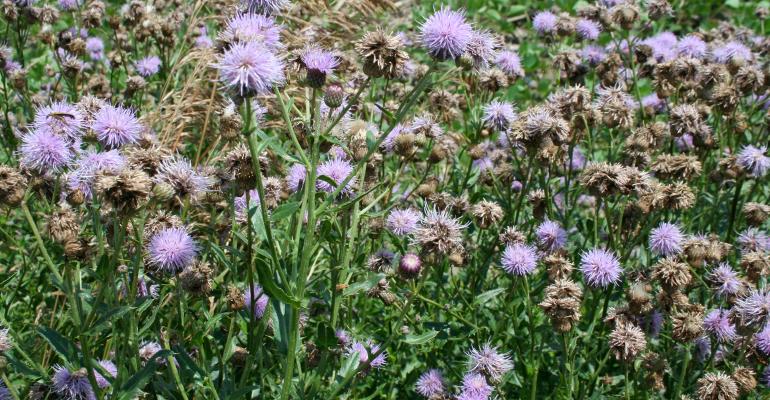Something rang a bell in my memory last week when my dad brought a huge dead seed head from the top of what looks like giant hogweed.
My dad said that he had seen a number of these plants growing almost like a grove of trees.
I have a friend in Bucyrus who has many of these awful weeds in her gardens and I shall deal with this plant shortly, which she called poison hemlock.
This serious weed has been pushing its way through our state as I have been reading.
One of the challenging things about this weed is that it is easily confused with any number of other relatives of this plant.
But right now as we go about the process of pulling weeds out of our gardens, we should get out there knowing that what we are pulling out is not going to hurt us.
My friend was in the process of cutting the flowers off the stems so they don’t produce anymore seed.
A few years ago I had a young friend helping me in my garden. He had started working in one of my more difficult beds. It seems that I have poison ivy growing in my bed. He caught some poison ivy so bad that he wound up at the doctor’s. From what I’ve heard is that this hogweed is even worse.
Giant hogweed can cause a problem called phytophotodermatitis. Sounds bad doesn’t it? It looks even worse from the pictures I’ve seen.
What happens is that the sap inside the plant if it gets on your skin can cause your pigment to change and for you to become extremely sensitive to the sun’s rays. Areas exposed on your skin can swell and blister and even cause permanent scaring. Get some of this sap in your eyes and you can suffer from temporary blindness and possibly permanent blindness.
Giant hogweed or heracleum mantegazzianun is a native to the Caucasus Mountains in Europe. Hogweed has made it on the national noxious weed list, which means that this plant can harm you or livestock and is not a native, and it has the ability to take over an area, because of it being very fertile. These plants can grow up to 15 feet tall, which means that this plant deserves the name of giant.
Both snap-dragons and giant hog weed are biennials, as defined by the dictionary a biennial takes two years to develop. Biennials flower and come to seed the second year. What I find kind of scary about this plant is that one plant can produce as many as 20,000 seeds, this quality points to the fact that this hogweed is very fertile.
For me the plant looks a lot like Queen Anne’s lace, which makes sense in that both are members of the apiaceae family or the carrot family. So one of the keys to identifying this plant is that it has a flower and leaf structure at times during the year similar to Queen Anne’s lace, but the leaves do vary as they are younger and older. One of the other key identifier’s is the stem which has purple areas and have white hair on their stems. The middle of the stem is hollow.
Giant hogweed was imported from Europe in 1917 and kept in some very up-scale gardens in New York. As a landscape designer a 15 feet tall plant with a variety of types of leaves and a little purple in the stem make this a potential plant of interest.
Bottom leaves on this plant can get up to 5 feet in size toward the end of the season when in moist fertile soils. This giant hogweed escaped cultivation and has found a certain amount of success in the wild.
You will find giant hogweed in 16 different states, and in Ohio you would have only found them along the Pennsylvania border just a few years ago. Now they are throughout the state.
Where you find moisture such as along ditches, which is where my dad found this grove, or streams, you will find a potential good place for giant hogweed to grow.
Credit: www.indeonline.com

